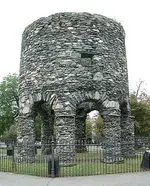tinpan
Silver Member
Was that the Knights Templar Black Horse Patrol that traveled the West leaving four sided stone markers because they ran out of coir during the long journey across America?
Legend is that a modern day Shriner group adopted that name as homage of those brave Templars.
Hi , Clearly the next volume of the book of medieval North America written in 2020 but published in 1307 TP






